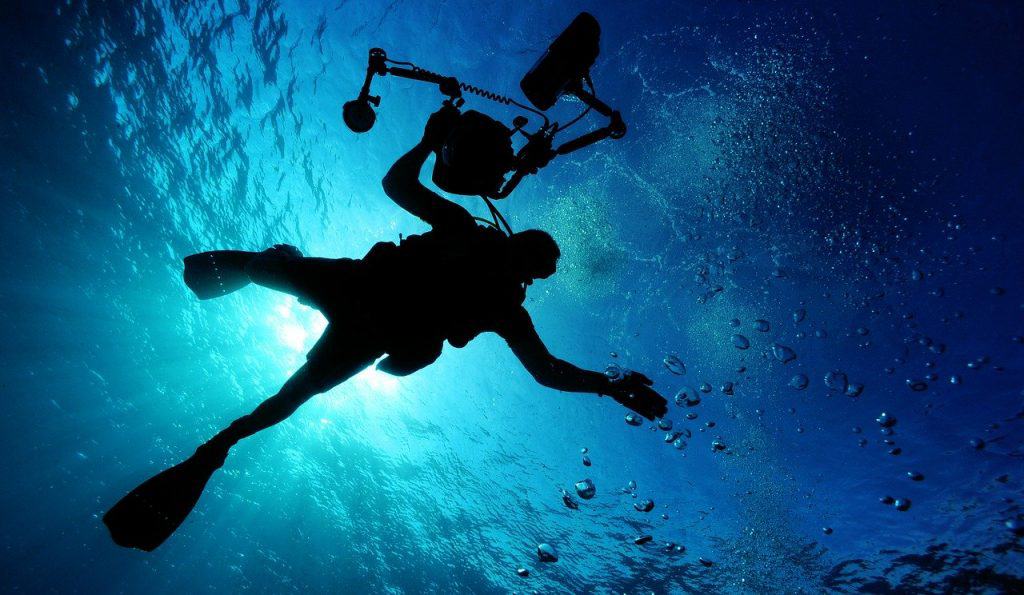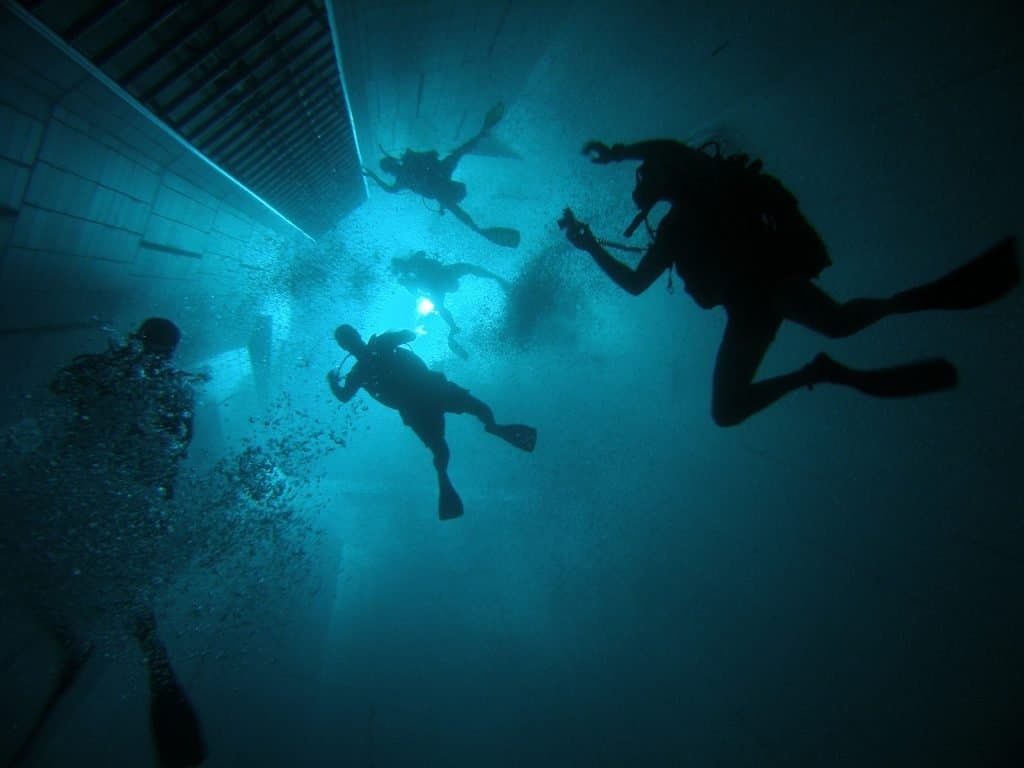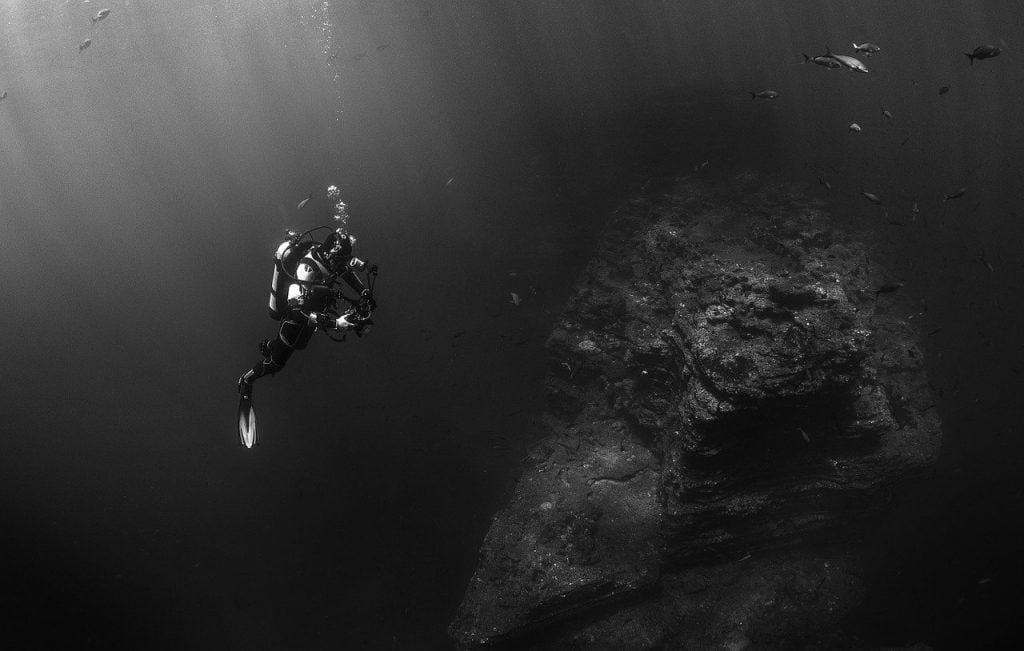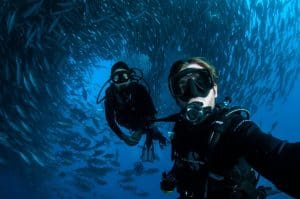The meaning of the word “deep “is as difficult to Express in numbers as it is to denote height for the word ”high”.
Eighteen meters is “high” for a person standing on the ground and ” low ” for a satellite in orbit. The terms’ deep ‘ and ‘high’ are subjective.
However, physics and physiology can slightly reduce the arbitrariness of the meaning of the word “deep ” in Amateur diving.
In any case, the border must be drawn somewhere, if only to make our discussion more meaningful and to understand the specifics of diving.
PADI and most members of the Amateur diver community define “deep” diving as diving 18 meters or lower, but no deeper than 40 meters. Amateur diving does not involve diving to depths of more than 40 meters, so they are not available to Amateurs.
Taking into account the possibilities of equipment for Amateur diving, the limited time for non-stop diving to depths of more than 18 meters, as well as the intensity and direction of training for Amateur divers, setting the depth limits are very useful and justified by experience.
What is the deep diving?
The human being is dreamer creature and for centuries human curiosity motivated him to push the boundaries of nature and part of that is to know how deep are the oceans and what is going on underwater, there for the deep dive becomes an important subject and to satisfy its hunger to know about the depth of ocean he must answer first, how deep a person can dive, or what is deep dive definition.
Deep diving or generally diving cannot happen without the right gear so we better ask how deep can a human dive with scuba gear.
How deep can you dive without decompression?

Although the maximum depth is defined as 40 m, as practice shows, there are four reasons why in most cases it is necessary to reduce the optimal depth limit to 30 meters.
First, at depths of more than 30 meters, small decompression-free limits and rapid airflow make dives very short.
Given the time and effort spent on planning and implementing a deep dive, its program and goal should be fully satisfying and achievable in 10 minutes.
Secondly, at depths of more than 30 meters, most divers are exposed to nitrogen anesthesia. This is nitrogen poisoning, which increases as the depth increases.
Although the susceptibility to nitrogen in the blood varies from person to person, this is a good reason not to go deeper than 30 m.
Third, when diving to depths of more than 30 meters, the chances of getting decompression sickness increase, especially during repeated dives. With only one balloon of air, it is very easy to exceed the pressure-free limit at this depth.
Finally, in many places at depths of more than 30 meters, nothing or almost nothing can be seen - the water absorbs light.
There it is much more difficult to navigate and read the readings of devices - the latter circumstance makes it difficult to control your equipment.
Another side another story deep dive is the equipment that makes your deep diving safer and year by year we are seeing new and higher quality equipment to ensure our safety.
How to increase your personal depth limit and how deep can human dive?
Although in the diving community, dives starting at 18 meters are considered “deep”, you need to decide which dive will be “deep” for you, based on the environment, your training and experience.
When setting the depth limit for yourself, do not forget about the experience and training of your partner.
For example, a dive of 18 meters will not cause difficulties if it is performed in the warm, transparent waters of a tropical sea, and you and your partner are properly prepared, and have been actively engaged in diving all the last time.
The same dive, but after a ten-month break and without preparation, will probably be more difficult and seem more “deep”.
The same dive to a depth of less than 18 meters in a cold and dark lake in poor visibility can be considered “deep” even if you have the appropriate experience and training. It is clear that the depth limits vary depending on circumstances.
When setting your depth limit for a given dive, take into account the conditions in which it is performed, as well as the partner’s capabilities and your own. First, think about the dive conditions. Based on them, what is the real depth limit?
Maybe you should start with a shallower dive and then gradually build up the depth? Second, decide how prepared you are for the dive physically and mentally. Are you in good shape, do you have the necessary experience, do you feel confident?
Third, look at what depths you have dived to before, what your nitrogen group is, and how much time you have spent on the surface since your last dive.
Check your underwater computer, if you have one. During repeated dives, the decompression limit is reduced, and it limits the depth of your dive (remember that deeper dives are made first).
Fourth, evaluate the geographical location of the place where you are diving. How quickly will help arrive if something happens to you? Fifth, evaluate your partner’s capabilities using the same criteria. The optimal and safe depth for both of you will be the maximum for this dive.
Go deeper

The diving community almost unconditionally accepts 40 meters as the limit for Amateur dives, but you’ve probably heard or read about people engaged in technical diving who go lower. This circumstance, however, does not affect the depth limits set for Amateur divers.
Once you understand the essence of the case, you will understand that when you are engaged in technical diving, you need to take a lot more equipment under the water: often it is not one, but four or six cylinders, several regulators, and so on, and all of a more complex design.
Diving to depths of more than 40 meters often requires breathing a special helium mixture, as well as several decompression stops lasting an hour or more.
As you can imagine, this type of diving requires special training and significant preliminary experience of Amateur dives.
Even with the appropriate equipment, experience, and training, technical diving remains much riskier than amateur diving.
If you take into account all the additional equipment, special diving techniques, and intensive training that reduce the risk of technical diving, exceeding the 40-meter depth limit seems quite reasonable.
Technical diving is not for everyone, and it is not the next mandatory step even after making several thousand Amateur dives, but if you are still interested in technical diving, you will have to acquire the necessary training and experience, and then try.
Finally, diving to a depth of more than 40 meters with one tank and standard equipment for Amateur divers is not technical diving. This is just not wise.
Diving is one of the most serious tests for the body, so it is important to know how deep can a human dive?
At the depth of freedivers, diving without equipment, just holding their breath, waiting for a lot of dangers: lack of oxygen, high pressure, darkness, and cold. We investigate what changes occur with the body of a diver who is diving to the depth.
Diving reflex

The mammalian diving reflex originated millions of years ago, during the formation of the oceans. It is also present in humans, provoking changes in the body designed to simplify the dive to depth.
First of all, the heart rate slows down by 10-30% (this figure is higher for experienced divers), reducing the body’s oxygen consumption.
This effect is called bradycardia. There is also a laryngospasm-a reflex that prevents water from entering the lungs, and the effect of vasoconstriction (increased blood pressure).
Then there is a so-called blood shift: blood flows to the vital organs, protecting them from pressure. The level of hemoglobin increases, allowing the diver’s body to accumulate more oxygen. By the way, this reflex can be triggered even at home – just dip your face in cold water.
Breath and buoyancy in diving

When you dive 10 m, the pressure on the body doubles. At a depth of 30 meters, it is lost, and after reaching the mark of 100 meters, the lungs are compressed to the size of a baseball.
At a depth of more than 6 m, the human body has a neutral buoyancy that allows it to stay at the same level without going deeper.
If you resist it with special devices like a belt with an additional load, there is a negative buoyancy, allowing the diver to continue his dive.
Freedivers should learn to distinguish the actual need to take a breath from a reflex impulse. Also, you should beware of the oversaturation of the body with oxygen, which is called nitrogen anesthesia.
When it first occurs, a feeling of euphoria, which flows into a violation of coordination. Hallucinations begin, thinking deteriorates.
As a result, the freediver loses consciousness, which inevitably leads to death if there is no safety net nearby. therefor how deep can humans dive has to a lot with the your body capacity
Start the dive!
Underwater, the body is primarily aimed at supporting the proper functioning of the brain. If there is a lack of oxygen and blood outflow from the hands and feet, motor skills deteriorate. There is a risk of loss of consciousness due to hypoxia.
The brain also plays an important role in the psychological aspects of immersion. Freediving is a dangerous activity, so the fear factor always takes place.
Newcomers are afraid of the approaching darkness with every meter, incomprehensible sounds, and the inability to breathe. The diver needs to cope with his fears by focusing on the dive.
Diving injuries

Injuries underwater are caused primarily by high pressure. The eardrums may burst, the face is injured by the mask, the pressure under which decreases, and it literally “bites” into the diver’s head.
The lungs stretch and contract, and the walls of the alveoli may burst, causing a bloody cough. If the diver has problems with the teeth, the pain in them increases due to expanding air bubbles that press on the teeth and nerves.
But the main danger underwater is caisson disease. Gases in the blood of a diver who quickly surfaced from a great depth form bubbles that disrupt blood flow.
Symptoms vary depending on the stage of the disease. This can be either a slight malaise with muscle pain, or an embolism of the respiratory system.
To dive or not to dive?
What is the maximum depth that a person can withstand? The success of the dive depends on the level of preparation and training of the freediver.
At the moment, the world record for diving belongs to 46-year-old Austrian Herbert Nitsch, who in 2012 reached a depth of 253 meters. In addition, he holds current records in eight other freediving disciplines.
